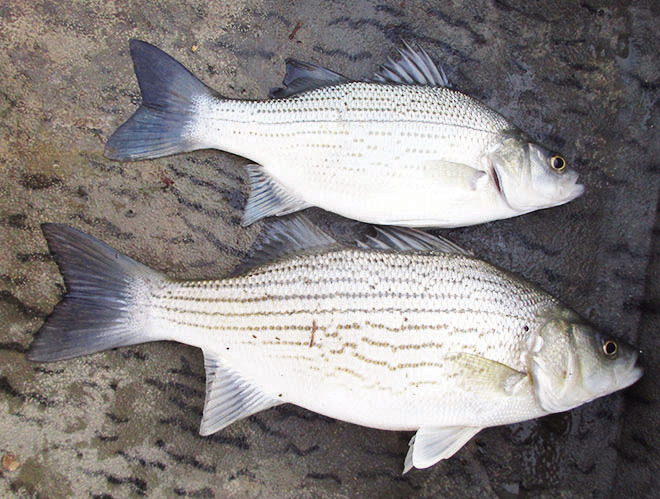Lightin Ridge By Larry Dablemont – Mountain Echo - The Mountaineer Echo

by Larry Dablemont
Fisheries biologists started creating hybrid fish years ago. It hasn't always worked out the way they thought it would. The cross of walleyes and saugers produce something they called a saugeye, which can reproduce naturally. They are supposedly fish that can thrive in southern lake water that is warmer and more colored, even muddier water, than walleye favor.
Oklahoma was the place where saugeye were first attempted, way back in the 1980s. Virginia stocked them ten years ago. The fish is meant to be a southern version of the walleye. But the saugeyes do reproduce. Most hybrids do not.
In more northern states there has been an attempt to hybridize red-ear sunfish with bluegill and green sunfish with bluegill. In Oklahoma again they have tried a lot of those sunfish hybrids, punkinseeds (longear sunfish) have been crossed with bluegill and green sunfish. Though I have looked for years, I have never seen it occur naturally in the wild. But I have seen versions of the hybridizations of sunfish biologists have tried. I cannot see how any of them produce a better fish.
What happens is odd…bluegill males crossed with green sunfish females will produce 90 percent male offspring, whereas the reverse cross will yield only 70 percent males. There is the belief that this skewed sex ratio makes that hybrid a good management tool. It is thought the resulting hybrid will not overpopulate and stunt as readily as bluegill, in ponds or small waters.
This week and all through October, I am going after what I think is the best result from hybridization, a cross between female stripers and male white bass. No common name really exists for the fish, they are just known as 'hybrids' and they seldom reach 20 pounds. Small ones are thought to be white bass by most who catch them.
But they are very distinctive.
The ones I catch out of rivers I fish in the fall are usually between 5 and 10 pounds, and I have my line broken often, because in rivers, they fight like tigers, using the current and finding logs and stumps if there are any close at all. Hybrids are harder fighters and you DO NOT fish for them with light tackle. Better have 14- to 20-pound line and a rod with some backbone.
In the fall, as the water cools, white bass and hybrids move upstream a little bit like they do in the fall. Both like that cool, well- oxygenated current.
Stripers do not seem so inclined.
I seldom fish for hybrids in the fall with anything but topwater lures. My favorite is a 9-inch Rapala-like floater that you can reel under and then stop and float. Buzz-baits also work, if you use casting reels with a high retrieve ration. Last October I boated 4 nice hybrids from 5 to 7 pounds and lost twice that many before I could get them to the boat. I also lost two of my topwater lures. I am putting pictures of a white bass and a hybrid on my website. If you have a computer, look for those on larrydablemontoutdoors. blogspot.com You'll note the broken lines on the belly of the hybrid, in contrast to straight, even lines on the white.
It is the rivers flowing into lakes which have hybrids that I like to fish, but as dry as it has been this year, a lake that has hybrids holds them into the winter as they school in certain places.
Norfork Lake and its tributaries have a lot of them, as does Truman Lake.
Folks who float Bryant Creek and Norfork River see a lot of stripers and hybrids in those rivers, but my favorites are the Osage and Sac. It has been a while since I have been on Beaver Lake, which is full of hybrids. Find a tributary there with plenty of water, and you will likely find whites and hybrids.
I said in last week's column I would tell the story of Bill Zippro, whose brother died from the deer disease that so many insist humans can't get.
It got on my computer site late, but it is there now. I urge you to read it. larrydablemontoutdoors.blogspot.com.
Write to me at Box 22, Bolivar, Mo.65613 or e-mail me at lightninridge47@gmail.com
Comments
Post a Comment